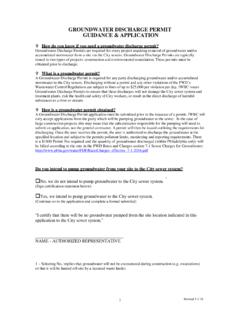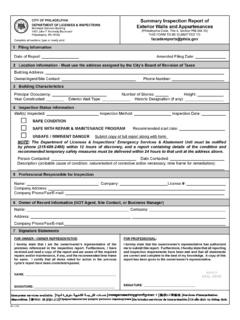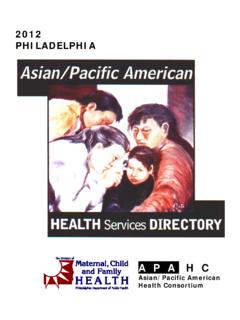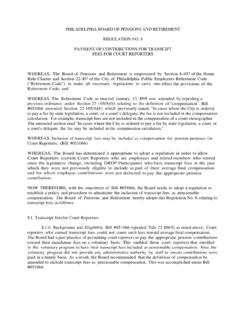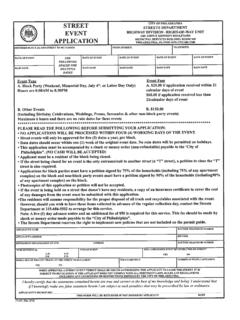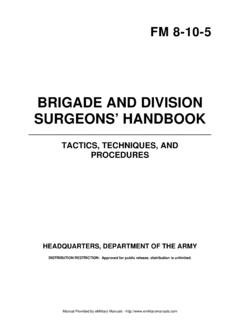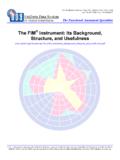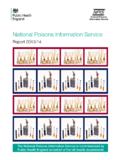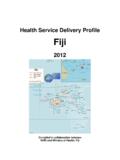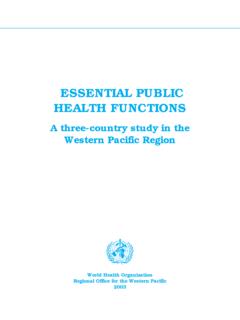Transcription of GUIDE TO THE FISCAL YEAR 2018 OPERATING …
1 GUIDE TO THE FISCAL year 2018 OPERATING budget DETAIL This GUIDE is intended to provide an overview of the information contained in the budget Detail books, as well as to highlight changes that have been made to the format of the budget Detail for FISCAL year 2018 . What is the budget Detail? The OPERATING budget Detail provides detailed information on the proposed OPERATING budget within each City department or agency. This includes summary information for each department and agency by FISCAL division, fund, and major class of expenditure for the proposed FISCAL year , as well as an estimate of the current FISCAL year , and the actual information from the prior FISCAL year that ended on June 30. Summary information pertaining to grants is also provided for each department. Major expenditure classes include the following: Class 100: Personal Services (includes employee salaries, health and medical benefits, definedbenefit contributions, overtime pay, part-time/seasonal pay, etc.)
2 Class 200: Purchase of Services (contracts with external for-profit and non-profit organizations) Class 300: Materials and Supplies Class 400: Equipment Class 500: Contributions, Indemnities and Taxes (indemnities include payments resulting fromlawsuits) Class 700: Debt Service Class 800: Payments to Other Funds Class 900: Advances and Other Miscellaneous PaymentsFunds include the General Fund, the City s Aviation and Water enterprise funds, as well as nine special revenue funds, including: County Liquid Fuels Tax, Special Gasoline Tax, Health Choices Behavioral Health, Hotel Room Rental Tax, Grants Revenue, Community Development, Care Rental Tax, Acute Care Hospital Assessment, and the Housing Trust Fund. An organizational chart is also included for each department, showing the FISCAL divisions or programs that make up each department s budget . For each department, the City provides detailed information at the FISCAL division or program level by minor expenditure class (sub-categories of the major expenditure classes), position title, and contract type.
3 Providing this information at the FISCAL division or program level allows for a more detailed picture of how departments will allocate the proposed appropriated funds to different types of activities. The budget Detail books are organized by department with departments grouped together in sections defined by function (Internal Services, Independent Agencies, etc.). This information is also available online at What is New About the budget Detail? For FISCAL year 2018 (FY18), a few key changes have been made to the budget Detail books. These changes include updating the way departments are organized to reflect the organizational structure of the Kenney Administration. All departments reporting to the Chief Administrative Officer are now grouped together as part of the Internal Service Group cluster; in previous years, the Records Department was included in the Citizen Service Department cluster. Additionally, the proposed budget for the new Department of Planning and Development is included.
4 Beginning in FY18, the Department of Planning and Development will 1 of 3consolidate all functions previously held within the following agencies: the Office of Housing and Community Development, the City Planning Commission, the Zoning Board of Adjustment, and the Historical Commission. With this consolidation, the City will meet the requirements of a 2015 amendment to the Philadelphia Home Rule Charter. Another key change to highlight is the new budgetary information included for departments participating in program-based budgeting. In July 2016, the Administration began implementation of this new budgeting tool, a best practice in municipal budgeting. The following 20 departments participated in Phase 1 of the implementation and are displaying their proposed FY18 budgets by program, rather than FISCAL division. Over the next three years, an additional 10-15 departments and agencies will participate in program-based budgeting annually with the goal of the whole City participating by FY21.
5 Chief Administrative Officer City Representative City Treasurer Commerce Community Schools and Pre-K Finance Fleet Management Labor Licenses and Inspections Managing Director Mayor Mural Arts Parks and Recreation Pensions and Retirement Procurement Public Health Records Revenue Streets Sustainability Each of the departments participating in program-based budgeting began by identifying a set of programs to be used in organizing their budgetary information. A program is defined as a set of services that contributes to the department s central mission. Programs may consist of several different types of services or activities, but all functions should support a common set of objectives or goals. Moving forward, these programs or service areas will take the place of FISCAL divisions in the budget Detail and will more accurately represent the current organizational structure and division of activities within each department. This year , for each of the departments participating in program-based budgeting, the budget Detail includes the same level of information previously provided for each FISCAL division, but this information is now displayed by program.
6 Additionally, the budget Detail also displays some new, supplemental information in the Program Summary Schedules (Forms 53E and F, previously called Division Summary Schedules). This information is intended to provide a clearer picture of the programs and services that the City delivers to Philadelphians, including how much is being spent on each program, whether the program generates revenues, whether it aligns to projects proposed in the FY18 Capital budget , and how well that program is performing. For each of the departments participating in program-based budgeting, the following new information is displayed by program: Program Description: A description of each program is included in Schedule 53E. Descriptions include information about the primary activities and services within each program, as well as how each program contributes to the department s central mission. Program Objectives: Program objectives for FY18 are included in Schedule 53E and 53F.
7 These objectives articulate what each department plans to accomplish within each program over the next FISCAL year . 2 of 3 Performance Measures: Performance measures and targets are included in Schedule 53E. Where possible, baseline data from FY16 and the first half of FY17 have been provided. In some instances, departments will begin collecting data for some of these measures in FY18 or in the second half of FY17 and therefore were not yet able to supply baseline data. Thus, some FY18 targets are preliminary and may be revised based on data collection in the first half of FY18. Selected Associated Non-Tax Revenues: Select revenues associated with each program are displayed by fund in Schedule 53E and by type in 53F. Types of revenue include: local revenue sources, revenue from the federal government, revenue from the Commonwealth of Pennsylvania, revenue from other governments, and revenue from other funds. Please note that these revenues do not include tax revenues, which are not easily attributable to a single program or service.
8 Selected Associated Capital Projects: Where applicable, capital projects associated with each program are displayed in Schedule 53E. Please note that the capital projects listed are not inclusive of all projects, but have been chosen based on their applicability to the program. These projects are presented at the budget line level and the following information is provided for each project: the name of the budget line, a carryforward calculation indicating the dollar amount of all funding sources carried-forward from previous years, the FY17 original appropriation and FY18 proposed budget for General Obligation funds, the FY17 original appropriation and FY18 proposed budget for all other funding sources, and the department for which dollars have been appropriated or for which appropriations are being proposed. In some cases, funds for these projects are appropriated to one department but are being displayed in the program summary of another department (see, for example, funds included in the Office of Fleet Management s capital budget that will be used to purchase compactors for the Streets Department; these funds are displayed in the Streets Department s Solid Waste Collection and Disposal program).
9 In other cases, a budget line may be split across one or more programs; in these instances, the split will be indicated with a percentage: for example, Citywide Facilities (20%). Selected Associated OPERATING Costs: Selected OPERATING costs associated with each program are displayed in Schedule 53E. Specifically, an employee benefits calculation is provided for full-time civilian and uniform employees to provide a more complete picture of the personnel costs associated with each program. Funds for employee benefits are included within the proposed appropriations of the Office of the Director of Finance and are therefore not included in the Class 100 totals for each department, however they will also be displayed in Schedule 53E for program-based budgeting departments moving forward. Please note that this calculation is derived by applying a standard benefit rate to each employee s salary and is an estimate of actual benefit costs, which include pension contributions, Social Security and Medicare contributions, employee disability costs, life insurance costs, legal costs, health and medical coverage costs, and unemployment compensation.
10 These costs vary depending on the health care plan and pension plan of each employee. This budget Detail is intended to provide a clear picture of how the Kenney Administration proposes to spend the funds that have been requested for the upcoming FISCAL year . With the expansion of program-based budgeting, the Administration intends to continue to enhance the information provided in these books so that the government may operate efficiently, effectively and with integrity and transparency. 3 of 3 This Page intentionally left blankSUPPORTING DETAILBOOK SECTION INDEXDEPARTMENTBOOKSECTIONBOOK ICOUNCILI1 MAYORI2 INSPECTOR GENERAL, OFFICE OF THE I3 LABOR, MAYOR'S OFFICE OFI4 TRANSPORTATION AND UTILITIES, MAYOR'S OFFICE OFI5 COMMUNITY EMPOWERMENT AND OPPORTUNITY, MAYOR'S OFFICE OFI6 ARTS AND CULTURE AND THE CREATIVE ECONOMY, OFFICE OFI7 MURAL ARTS PROGRAMI8 ART MUSEUM, PHILADELPHIAI9 ATWATER KENT MUSEUMI10 SUSTAINABILITY, OFFICE OFI11 COMMUNITY SCHOOLS AND PRE-K, MAYOR'S OFFICE OFI12 FINANCE, OFFICE OF THE DIRECTOR OFI13 REVENUE, DEPARTMENT OFI14 SINKING FUND COMMISSIONI15 TREASURER, CITYI16 PENSIONS AND RETIREMENT, BOARD OFI17 PROPERTY ASSESSMENT, OFFICE OFI18 CITY REPRESENTATIVEI19 COMMERCE (INCL.)
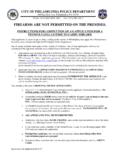
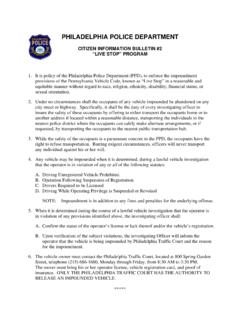

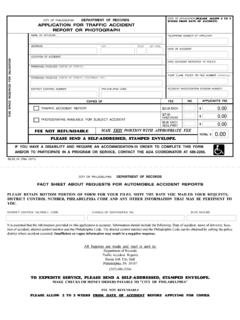
![[PSA] Philly: Classaction lawsuit brings changes in …](/cache/preview/1/4/c/8/8/d/5/c/thumb-14c88d5c5b2f1fee5e561fc7daceb397.jpg)
